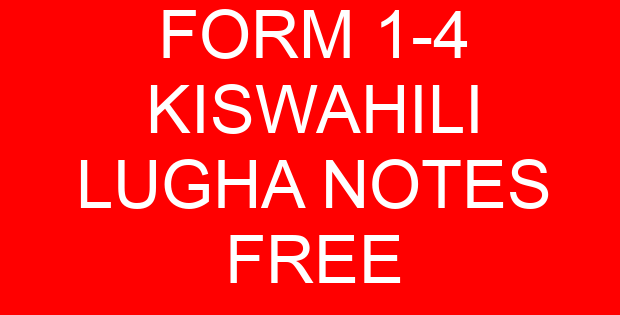FORM 1-4 KISWAHILI LUGHA NOTES FREE
MATUMIZI YA LUGHA Kiimbo Jinsi sauti inavyopanda na kushuka mtu anapoongea. Huibua maana halisi ya maneno yanayosemwa kama ifuatavyo: Sentensi za taarifa Mtoto anaandika barua.… Read More »FORM 1-4 KISWAHILI LUGHA NOTES FREE
